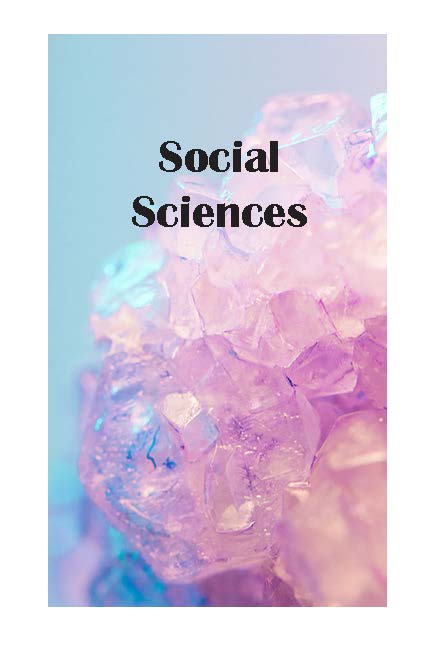A Literature Review on Physiognomic Homogamy
Main Article Content
Abstract
This literature review is meant to cover the working definitions, importance, and potential reasoning behind the experience of physiognomic homogamy. Physiognomic homogamy constitutes the cross-section between physical attractiveness and homogamy. Homogamy, which will be more thoroughly depicted within the paper, encompasses each trait that determines the success rate of a relationship throughout all stages. Physical attractiveness is one of these traits— it is the scale on which we dictate the level of aesthetic pleasantness associated with the physical features of us and those around us. An in-depth study regarding multiple papers was done to reach the conclusion that physiognomic homogamy is a clear indicator of relationship success and can be determined through self-perceived confidence, opposite-sex parent imprinting theory, and the correlation between personality and physical attractiveness. This is especially critical information as it may aid in the process of efficient mate selection and provide insight as to why certain relationships were unsuccessful in the past. It should be noted that homogamy is extremely present here and should be utilized as a factor to determine which romantic relationships we pursue. However, the cross-section between physical attractiveness and homogamy is the specific focus.
Downloads
Article Details

This work is licensed under a Creative Commons Attribution-NonCommercial 4.0 International License.
Authors who publish with this journal agree to the following terms:
- Authors retain copyright and grant the journal right of first publication with the work simultaneously licensed under a Creative Commons Attribution License that allows others to share the work with an acknowledgement of the work's authorship and initial publication in this journal.
- Authors are permitted and encouraged to post their work online (e.g., in institutional repositories or on their website) prior to and during the submission process, as it can lead to productive exchanges, as well as earlier and greater citation of published work (See The Effect of Open Access).
- Student authors waive FERPA rights for only the publication of the author submitted works.
Specifically: Students of Indiana University East voluntarily agree to submit their own works to The Journal of Student Research at Indiana University East, with full understanding of FERPA rights and in recognition that for this one, specific instance they understand that The Journal of Student Research at Indiana University East is Public and Open Access. Additionally, the Journal is viewable via the Internet and searchable via Indiana University, Google, and Google-Scholar search engines.
References
Bale, C., & Archer, J. (2013). Self-perceived attractiveness, romantic desirability and self-esteem: A mating sociometer perspective. Evolutionary Psychology, 11(1), 68-84. doi:10.1177/147470491301100107
Bereczkei, T., Gyuris, P., & Weisfeld, G. E. (2004). Sexual imprinting in human mate choice. Proceedings of the Royal Society of London. Series B: Biological Sciences, 271(1544), 1129-1134. doi:10.1098/rspb.2003.2672
Blackwell, D. L., & Lichter, D. T. (2004). Homogamy among dating, cohabiting, and married couples. The Sociological Quarterly, 45(4), 719-737. doi:10.1525/tsq.2004.45.4.719
Chambers, V. J., Christiansen, J. R., & Kunz, P. R. (1983). Physiognomic Homogamy: A test of physical similarity as a factor in the mate selection process. Biodemography and Social Biology, 30(2), 151-157. doi:10.1080/19485565.1983.9988529
Debruine, L. M. (2005). Trustworthy but not lust-worthy: Context-specific effects of facial resemblance. Proceedings of the Royal Society B: Biological Sciences, 272(1566), 919-922. doi:10.1098/rspb.2004.3003
Gutierres, S. E., Kenrick, D. T., & Partch, J. J. (1999). Beauty, Dominance, and the Mating Game: Contrast Effects in Self-Assessment Reflect Gender Differences in Mate Selection. Personality and Social Psychology Bulletin, 25(9), 1126–1134. https://doi.org/10.1177/01461672992512006
Hinsz, V. B. (1989). Facial resemblance in engaged and married couples. Journal of Social and Personal Relationships, 6(2), 223-229. doi:10.1177/026540758900600205
Jones, H. E. (1929). Homogamy in intellectual abilities. American Journal of Sociology, 35(3), 369-382. doi:10.1086/215050
Little, A., Penton-Voak, I., Burt, D., & Perrett, D. (2003). Investigating an imprinting-like phenomenon in humans. Evolution and Human Behavior, 24(1), 43-51. doi:10.1016/s1090-5138(02)00119-8
Lundy, D. E., Barker, B. C., & Glenn, A. J. (2013). The role of aesthetic preferences similarity in attraction. Empirical Studies of the Arts, 31(2), 195-221. doi:10.2190/em.31.2.e
Lundy, D. E., Schenkel, M. B., Akrie, T. N., & Walker, A. M. (2010). How important is beauty to you? The development of the Desire for Aesthetics Scale. Empirical Studies of the Arts, 28(1), 73-92. doi:10.2190/em.28.1.e
Nojo, S., Tamura, S., & Ihara, Y. (2012). Human homogamy in facial characteristics. Human Nature, 23(3), 323-340. doi:10.1007/s12110-012-9146-8
Perrett, D., Penton-Voak, I. S., Little, A. C., Tiddeman, B. P., Burt, D. M., Schmidt, N., . . . Barrett, L. (2002). Facial attractiveness judgements reflect learning of parental age characteristics. Proceedings of the Royal Society of London. Series B: Biological Sciences, 269(1494), 873-880. doi:10.1098/rspb.2002.1971
Pozzebon, J. A., Visser, B. A., & Bogaert, A. F. (2012). Do you think you're sexy, tall, and thin? The prediction of self-rated attractiveness, height, and weight. Journal of Applied Social Psychology, 42(11), 2671-2700. doi:10.1111/j.1559-1816.2012.00957.x
Terry, R. L., & Macklin, E. (1977). Accuracy of identifying married couples on the basis of similarity of attractiveness. The Journal of Psychology, 97(1), 15-20. doi:10.1080/00223980.1977.9915919
Valentova, J. V., Bártová, K., Štěrbová, Z., & Varella, M. A. (2017). Influence of sexual orientation, population, homogamy, and imprinting-like effect on preferences and choices for female buttock size, breast size and shape, and WHR. Personality and Individual Differences, 104, 313-319. doi:10.1016/j.paid.2016.08.005
Wong, Y. K., Wong, W. W., Lui, K. F., & Wong, A. C. (2018). Revisiting facial resemblance in couples. Plos One, 13(1), 1-12. doi:10.1371/journal.pone.019145

